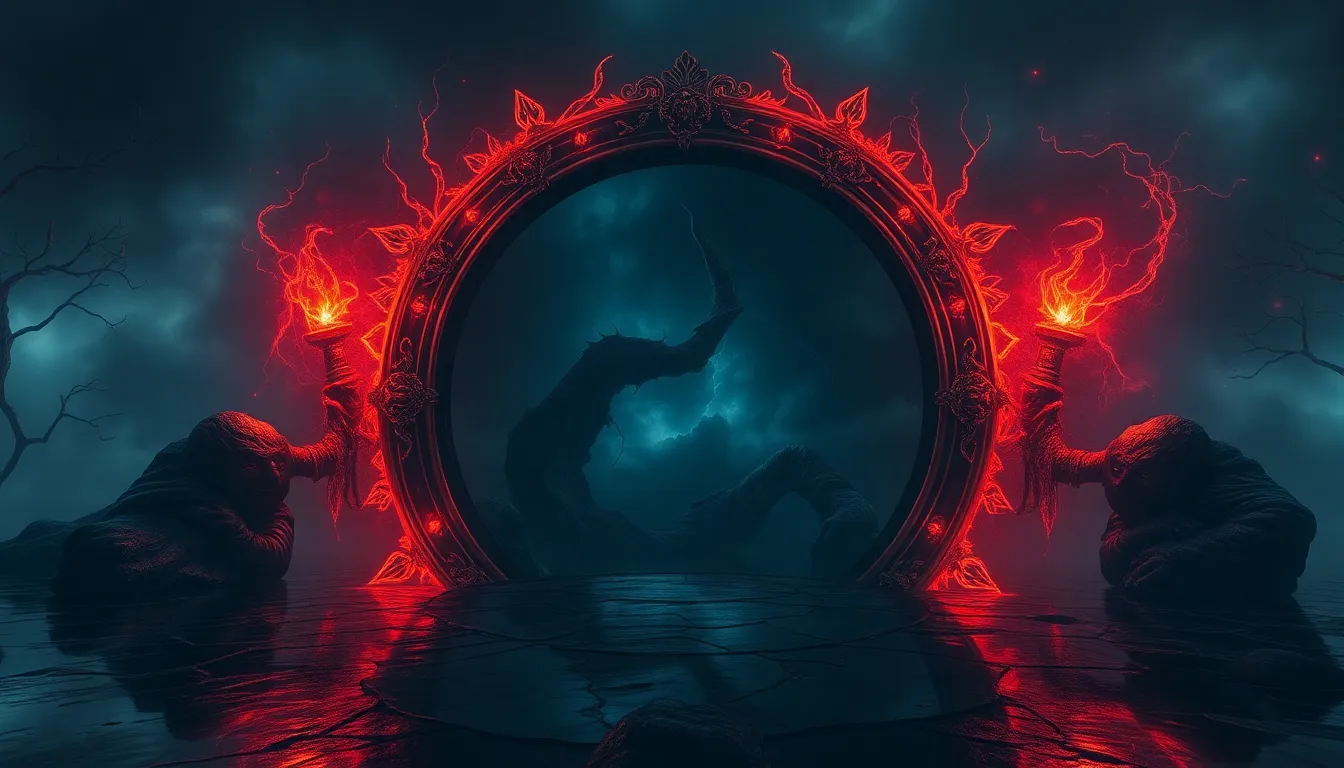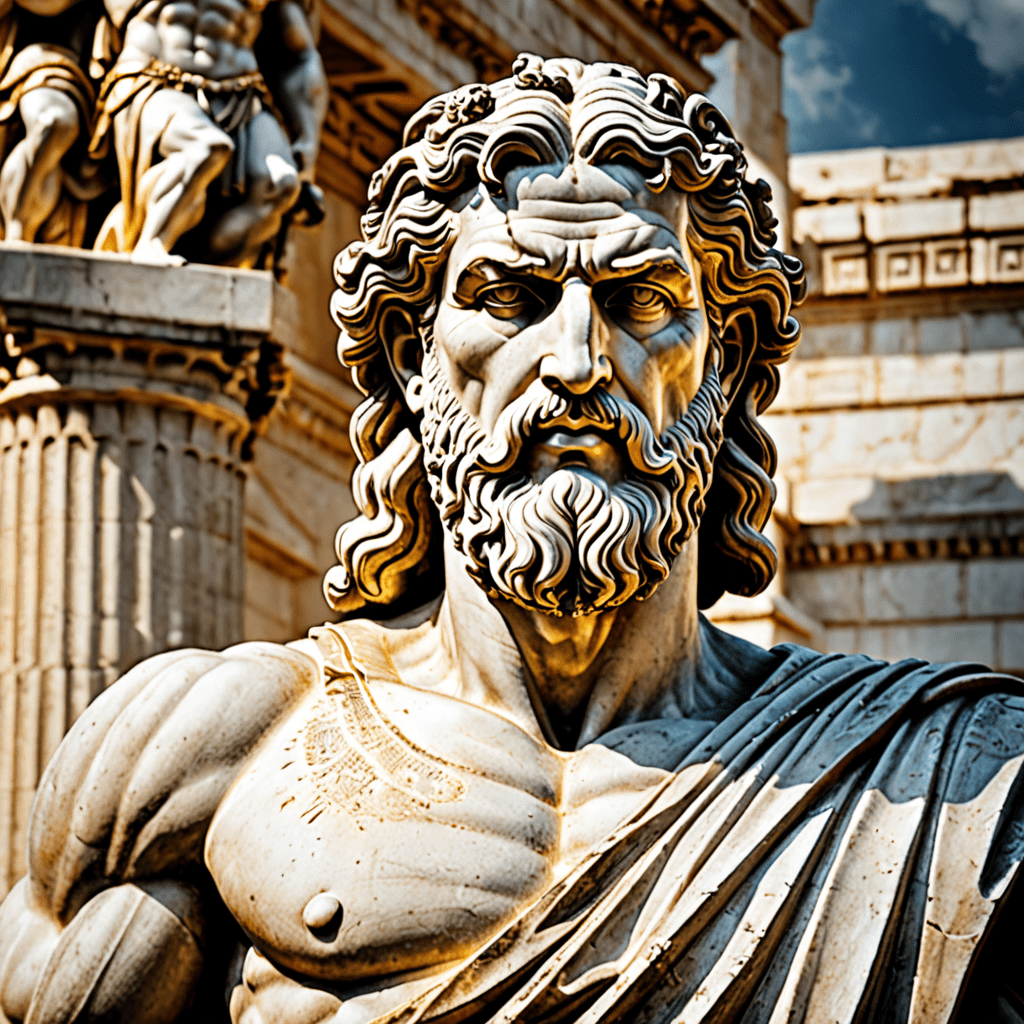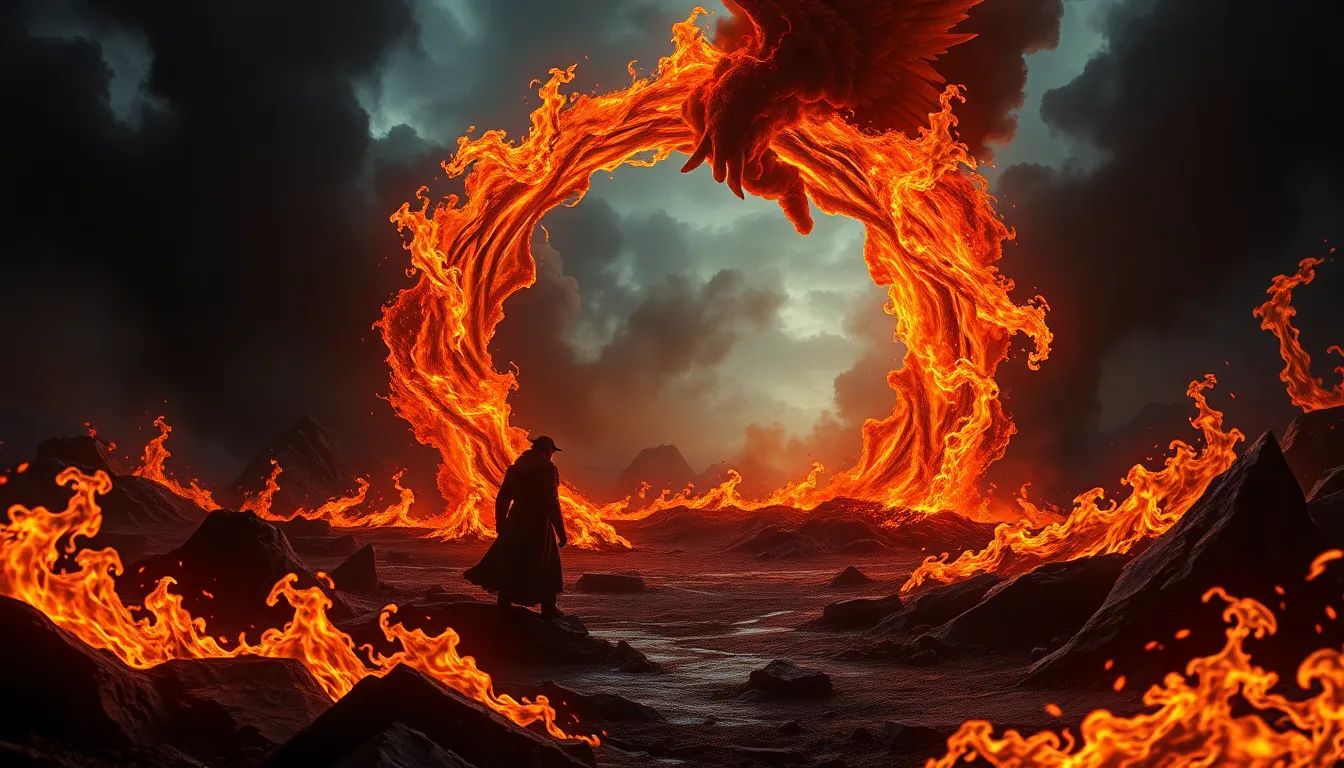The Legend of the Cursed Mirror: Reflections of the Damned
I. Introduction
The legend of the cursed mirror is a tale that has haunted various cultures for centuries. It speaks of a mirror that not only reflects one’s image but also reveals the darkest aspects of one’s soul. This legend highlights the significance of mirrors in folklore and mythology, often acting as gateways to the supernatural or reflections of inner turmoil.
The purpose of this article is to explore the origins, implications, and cultural significance of the cursed mirror legend, delving into its historical context and the psychological themes it embodies.
II. The Origins of the Cursed Mirror Legend
Mirrors have held a place of intrigue throughout history, serving as both practical objects and mystical artifacts. In ancient cultures, mirrors were often made from polished metals or obsidian and were believed to possess magical properties. They were used in rituals and were thought to reveal truths hidden from the human eye.
The cursed mirror legend began to take shape with initial sightings and stories emerging in various communities. Tales of individuals who gazed into the mirror only to be met with horrific reflections became common. Key figures in the evolution of this legend include:
- Mythical storytellers who passed down oral traditions.
- Artists and writers who depicted the mirror in their works.
- Folklorists who documented variations of the tale across cultures.
III. The Symbolism of Mirrors in Folklore
Mirrors often symbolize more than just reflective surfaces; they serve as portals to the spirit world, offering glimpses into realms beyond our own. In many cultures, mirrors are believed to connect the physical world with the supernatural, making them powerful objects in rituals and divination.
Moreover, mirrors reflect not only an image but also the psyche of the individual. The psychological implications of seeing one’s true self can be both enlightening and terrifying. The duality of mirrors emphasizes the contrast between beauty and horror:
- Beauty: Mirrors can enhance one’s self-image and serve as a tool for self-exploration.
- Horror: They can also reveal fears, insecurities, and the darkness within.
IV. The Curse: Nature and Consequences
The curse associated with the cursed mirror varies from tale to tale, but it generally involves a transformation of the viewer into a ghostly apparition, or worse, a reflection that seeks to escape the confines of the mirror. Those who encounter the mirror are said to experience misfortune, madness, or even death.
Personal accounts and testimonies from those who faced the cursed mirror often share similar themes of dread and despair. These stories highlight the thematic representation of fear and doom that the mirror embodies:
- Visions of their own demise or that of loved ones.
- Unexplainable phenomena occurring in their lives post-encounter.
- A sense of being watched or pursued by their reflection.
V. Cultural Variations of the Cursed Mirror Legend
Similar legends of cursed mirrors can be found in various cultures around the world. For example:
- In Japanese folklore, the mirror is often associated with the goddess Amaterasu, and tales of cursed mirrors often involve themes of light and darkness.
- European tales frequently involve enchanted mirrors that reveal truths or bring bad luck to those who gaze into them.
- African traditions may include mirrors associated with ancestors, where looking into them can summon spirits or bring forth ancestral warnings.
A comparative analysis of these themes reveals common motifs, such as the interplay between light and dark, the nature of truth, and the consequences of vanity. The cursed mirror’s evolution in modern storytelling continues to draw on these foundational themes, adapting them for contemporary audiences.
VI. The Cursed Mirror in Literature and Media
The motif of the cursed mirror has appeared in numerous iconic works of literature and media, influencing the horror genre significantly. Examples include:
- Snow White where the Evil Queen uses a magic mirror to affirm her beauty.
- Films like Candyman where mirrors serve as portals to malevolent spirits.
- Literature such as The Picture of Dorian Gray where reflections reveal the consequences of a life of hedonism.
This motif has evolved in contemporary media, often incorporating modern fears and societal anxieties, thus maintaining its relevance and horror.
VII. Psychological Perspectives on the Cursed Mirror
From a psychological standpoint, mirrors can have a profound impact on human behavior. The reflection serves as a metaphor for self-examination and the confrontation of one’s identity. The cursed mirror specifically highlights:
- The exploration of identity and self-perception, prompting individuals to confront their true selves.
- The phenomenon of fear, which often reflects societal anxieties, such as the fear of aging, loss, or the unknown.
These psychological elements contribute to the mirror’s enduring presence in folklore and its adaptability in modern storytelling.
VIII. Modern Interpretations and Adaptations
In recent years, adaptations of the cursed mirror legend have emerged in film, theatre, and literature. Modern technology has also played a role in reinventing the narrative, with virtual reality and interactive storytelling allowing audiences to engage with the legend in new ways.
The reception of these adaptations demonstrates a continued fascination with the cursed mirror, as audiences are drawn to its blend of horror and psychological depth.
IX. The Cursed Mirror as a Cautionary Tale
The legend of the cursed mirror serves as a moral lesson, warning against the dangers of vanity, obsession, and the pursuit of superficial beauty. It reflects societal issues and human flaws, reminding us of the consequences of ignoring our inner selves.
Folklore plays a crucial role in conveying cultural values and warnings, and the cursed mirror is no exception. It challenges individuals to reflect on their lives and the truths they may prefer to avoid.
X. Conclusion
In summary, the legend of the cursed mirror is a rich tapestry of history, symbolism, and cultural significance. From its origins in ancient cultures to its modern interpretations, the cursed mirror continues to fascinate and terrify. It serves not only as a reflection of our fears but also as a mirror to our souls, urging us to confront the darkness within and the societal issues we face. The cursed mirror remains a potent reminder of the power of reflection, both literally and metaphorically.
https://www.youtube.com/watch?v=d2iegW8JtN4



